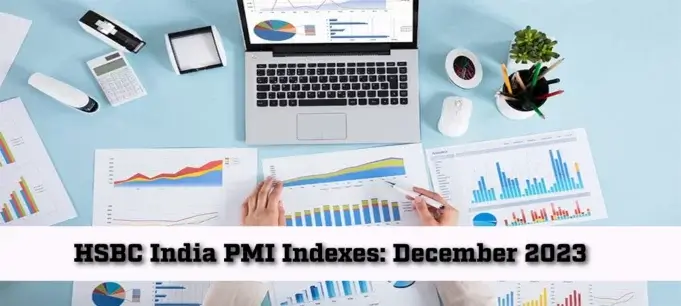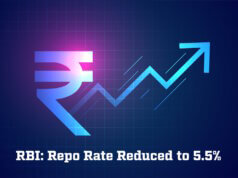Manufacturing
The Indian manufacturing industry closed out 2023 on a positive note, displaying robust growth alongside minimal inflation. The HSBC India Manufacturing PMI survey, conducted by S&P Global, highlighted the sector’s continued expansion in December, even though the growth momentum had slightly diminished. Factory orders and output increased, albeit at a softer pace, while business confidence regarding the year-ahead outlook strengthened.
Encouragingly, input costs experienced the second-slowest rate of increase in nearly three-and-a-half years, and charge inflation reached a nine-month low. Despite a decline from 56.0 in November to 54.9 in December, the seasonally adjusted HSBC India Manufacturing Purchasing Managers’ Index (PMI) indicated significant improvement in the sector’s health. The reading was above the long-term series trend, though it contributed to the lowest quarterly average (55.5) since the Q1 fiscal year 2022-23.
New business gains, favorable market conditions, and events such as fairs and expositions collectively contributed to another substantial increase in manufacturing production in December. However, the rate of expansion slowed, reaching its lowest point since October 2022, despite remaining above the long-term average. This slowdown was attributed to decreased demand for specific products.
Similarly, new orders placed with Indian manufacturers increased significantly but at a slower pace in December, marking the slowest expansion in a year and a half. International order receipts at Indian goods producers continued to rise for the twenty-first consecutive month, with gains from clients in Asia, Europe, the Middle East, and North America. However, new export sales expanded moderately, marking the joint-slowest rate in eight months.
The manufacturing industry experienced a slight uptick in purchasing costs by the end of 2023, with items like chemicals, paper, and textiles seeing price increases. Nevertheless, the rate of inflation remained negligible by historical standards and was the second-weakest in almost three-and-a-half years.
For the fourth consecutive month, charge inflation outpaced input prices. Companies that increased their fees in December mentioned passing on recently absorbed cost burdens to clients.
HSBC India PMI data also revealed that manufacturers faced only marginal pressure on their production capacity at the end of the third fiscal quarter. Employment remained stable in December, with only a slight uptick in the employment index. Regarding stocks, input holdings increased further, while inventories of finished products decreased due to order fulfillment.
The growth in input inventories was driven by sustained increases in buying levels over the past two and a half years. Although the growth in December was sharp, it was the slowest since November 2022.
When assessing the year-ahead outlook for production, Indian manufacturers displayed optimism for the next three months. Factors such as advertising, improved customer relations, and new inquiries were cited as key drivers of business confidence in December.
Services
In the service economy, there was a noticeable pickup in growth momentum at the end of 2023. Demand buoyancy led to increased sales, driving business activity. Job creation continued for the nineteenth consecutive month, and business optimism strengthened. Additionally, cost pressures decreased further, reaching their lowest levels in nearly three and a half years, even though there was a quicker upturn in selling charges.
The seasonally adjusted HSBC India Services PMI Business Activity Index rose from 56.9 to 59.0 in December, indicating a sharp increase in output, the most pronounced since September. However, the quarterly average was the lowest since the Q4 fiscal year 2022-2023 due to lower readings in October and November. Favorable economic conditions and positive demand trends were key factors driving output growth, with new business intakes rising significantly in December, reaching the highest level in three months.
The increase in total new business was supported by continued growth in international sales, with service providers noting higher demand from clients based in various regions. However, the rate of expansion in new export orders moderated, marking the softest increase since June.
Services firms in India expected strong demand momentum to continue into 2024, which, coupled with advertising and improved customer relationships, contributed to upbeat forecasts for output. Overall business optimism remained strong, surpassing November’s levels.
The HSBC PMI data indicated ongoing job creation in India’s service economy, with new workers hired on both full- and part-time bases. Although slight, the aggregate rate of employment growth was faster than in November.
In December, there was mild pressure on the capacity of Indian services companies, with a slight increase in outstanding business. The rate of accumulation was the quickest in four months, consistent with its long-run average.
Despite reports of higher prices for some inputs, the overall expense of services firms continued to increase at the end of the third fiscal quarter. However, the rate of inflation remained modest, falling below its long-term average and reaching its weakest point in nearly three and a half years.
Nonetheless, charge inflation showed a mild increase in December. The rate of price increase for services provided in India was solid, exceeding its long-term average and outpacing that of input costs. This increase was driven by firms passing on cost burdens to their customers.
Composite Index
Overall, India’s private sector activity saw an uptick in December, reversing the slowdown observed in November. The HSBC India Composite PMI Output Index increased from 57.4 to 58.5, indicating a sharp expansion, the strongest since September. This acceleration was primarily driven by faster growth in the service sector, as factory production grew at the slowest pace in 14 months. Goods producers reported a weaker increase in new orders, while service providers registered an acceleration. At the composite level, sales expanded at the fastest rate since September.
There was a notable slowdown in the overall rate of input price inflation at the end of 2023, the least pronounced in 40 months. Cost pressures were more significant in the service sector. Prices for both Indian goods and services continued to rise in December, with rates of inflation remaining relatively stable since November. The combined increase across the private sector was solid but represented the second-weakest growth in nine months.
source: S&P Global











